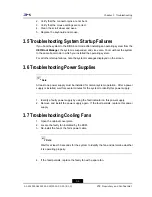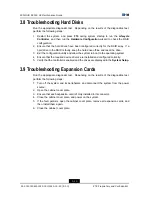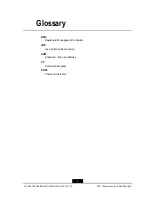
Chapter 2
Maintenance Operations
Table of Contents
Restarting the Server .................................................................................................2-1
Querying Alarm Information........................................................................................2-1
2.1 Restarting the Server
If the server is faulty, you can restart the server to see whether the server can be recovered.
Steps
1.
Perform the corresponding operations as needed:
To...
Do...
Restart the server in a software way, release the system
memory, and restart the operating system
Press
Ctrl+Alt+Del
.
Release the system memory, perform the
POST
self-test
again, restart the operating system, and reboot all
peripherals
Press down the power button on the
front control panel of the server.
– End of Steps –
2.2 Querying Alarm Information
Querying alarm information is a common method for maintaining the .
The alarm
information helps you verify failure causes.
You can query the current and historical alarms and notifications of the server system. This
procedure describes how to query the current alarms.
l
Current alarms: alarms that exist in the system and are not cleared.
l
Historical alarms: alarms that have been cleared and are stored in the database.
l
Notifications: informational prompts generated in the system operation. Notifications
allow maintenance personnel to know the operational status of each module in time.
Context
Alarms are divided into four levels according to effects on the system. For details, refer to
Table 2-1
.
2-1
SJ-20150306151222-003|2015-03-20 (R1.0)
ZTE Proprietary and Confidential





































